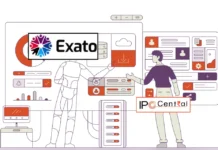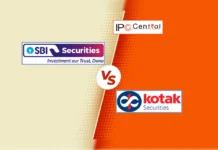Infibeam IPO will be India’s first e-commerce public issue when it opens for subscription on 21 March. The company plans to raise INR450 crore through the IPO which will close on 23 March. In its red herring prospectus (RHP), Infibeam said the issue will be managed by SBI Capital Markets and Elara Capital (India). The upcoming IPO of Ahmedabad-based e-commerce company is priced in the range of INR360-432 per share. Following the IPO and share allocation, Infibeam’s listing will be on BSE and NSE.
While competing with venture capital and private equity backed players like Flipkart, Amazon, and Snapdeal, Infibeam has turned profitable but more on this later. Here are some broad details before we delve deeper in the IPO review.
Infibeam IPO details
| IPO dates | 21-23 March 2016 |
| Price Band | INR360 – 432 per share |
| Issue Size | INR450 crore |
| Minimum Bid | 34 shares |
| Retail allocation | 10% |
Infibeam IPO structure
The IPO will not involve offer for sale (OFS) and Infibeam will get all the proceeds from the offer. This is hardly surprising since the company is largely controlled and owned by promoters including Vishal Mehta who directly owns 14% equity in the company. In total, promoters Ajit Mehta, Vishal Mehta, Malav Mehta, and Jayshree Mehta hold 32.15% stake while promoter group owns another 24.47%. Infibeam’s promoters includes Infinium Motors Private Limited which operates seven Toyota dealership outlets in Gujarat.
Use of proceeds from Infibeam IPO
The Ahmedabad-based company plans to use the funds for expanding business, setting up cloud data unit and new logistics centers. The biggest allocation of INR235.2 crore has been made for a new cloud data centre and purchase of property to house its registered and corporate offices. Nearly INR37.5 crore will be invested in setting up 75 logistics centers while INR67 crore will be used to purchase software. Remaining amount will be used towards general corporate purposes.
It is worth highlighting that Infibeam is taking the listing route to the main exchanges of BSE and NSE, although market regulator SEBI allowed start-ups last year to list on a separate platform.
Read Also: Why SEBI’s e-IPO norms are two steps forward and one step back

Business background
Established in 2007 – the same year when Flipkart and Myntra started – Infibeam operates the infibeam.com website and BuildaBazaar marketplace for enterprise users. On the retail side, the e-retail business included more than 15 million SKUs as of 31 December 2015 across 40 product and service categories including mobile and tablets, computers and accessories, electronics and cameras, housing and kitchen, books and magazines, fashion and accessories, baby care and toys, movies and music, beauty and health, auto and auto accessories, travel and tickets and gifts.
The company has more than 5,000 merchants on Infibeam.com and it claims to serve more than 7.8 million active users on its platform. In terms of infrastructure, Infibeam has six warehouses in Delhi, Gurgaon, Bengaluru, Ahmedabad, Mumbai and Kolkata for our own inventory, in addition to 12 logistics centres across 11 cities in India.
Read Also: Upcoming IPOs in 2016: IPOs worth at least INR13,500 crores in pipeline
For a change, profits and e-commerce go together
Anyone having a remote experience or connection with India’s e-commerce market is most likely to be aware of the fact that e-commerce is largely financed by external investors such as venture capital and private equity as the core function remains unprofitable.
Like most of its competitors, Infibeam booked losses in all of the last five years as indicated in the table below. In the same timeframe, the company maintained its consistent revenue growth. As a result, its losses as a percentage of turnover were declining regularly.
Continuing with this trend, the company said its red herring prospectus (RHP) that it has become profitable now. In the first six months of the current financial year ended September 2015, Infibeam earned INR6.5 crore on revenues of INR171.27 crore. This small profit compares with a loss of INR9.8 crore for FY2015. This makes Infibeam an interesting play in the e-commerce space.
Infibeam’s consolidated financial performance (figures in INR crore) | |||||
| FY 2011 | FY 2012 | FY 2013 | FY 2014 | FY 2015 | |
| Total revenue | 54.4 | 129.2 | 152.6 | 209.0 | 295.2 |
| Total expenses | 52.7 | 140.0 | 177.5 | 235.9 | 305.0 |
| Profit/(loss) after tax | (18.6) | (10.8) | (24.9) | (25.9) | (9.8) |
Should you invest?
Before we get down to answering the most important question, here are some things which stand out in the case of Infibeam. First, it has no external investors while operating in a business that is known to consume money by truckloads. Infibeam received INR33.3 crore in February 2012 from Bennett Coleman & Co Ltd under an advertising agreement through Brand Equity Treaties Ltd (BETL). As a result, Bennett owns 1.8% stake in the company now.
In absence of external funding, Infibeam has been conservative with expenses which has greatly helped in keeping losses to the minimum. However, it also means that Infibeam has not been as aggressive in advertising and marketing as its larger peers. This has logically led to a lackluster performance on the customer acquisition front. Revenue growth, even though consistent, has not been anywhere close to the leaders in the game.
Since none of the major e-commerce players are listed, statutory financial figures for them aren’t available. However, Jasper Infotech Private Limited, which owns and operates Snapdeal, reported revenue of INR938 crore for FY2015. This is up from just INR154.1 crore in FY2014, indicating the massive growth the online portal witnessed in the latest year. Similar figures can be imaged for Flipkart and other private equity backed e-commerce players. Infibeam also trails its peers on other important parameters. As compared to Infibeam’s 7.8 million active users and 15 million SKUs, Flipkart boasts of 50 million registered users and sells more than 30 million products. Similarly, Snapdeal claims to have more than 40 million registered users.
Read Also: How to identify good IPOs
One distinctive advantage Infibeam has over its peers is profitability but the key question is how this is played to the strength. While we place a high importance on profits, the rules of the e-commerce game favour size and growth. With deep pockets, technological edge, and price advantage on the side of bigger players, it is only a logical assumption that smaller parties will be increasingly marginalized going forward. These changes are already happening elsewhere in the start-up space, CommonFloor’s acquisition by Quikr at discounted valuations being a case in point. Similarly, Morgan Stanley recently marked down the value of its stake in Flipkart by 27%, in a strong indication that e-commerce valuations are not realistic.
Infibeam’s profits largely flow from its B2B focus, played through the e-commerce marketplace platform named BuildABazaar. Infibeam offers the platform to its enterprise clients such as Panasonic, Crossword Bookstores, Spice Retail, Adlabs Entertainment, Gulf Oil Lubricants, Hidesign India, and Mumbai International Airport to create online storefronts. This means that the company’s operations are a mix of B2B and B2C but it seems to be asking for valuations on the lines of its B2C peers. On the basis of EPS of INR1.5 for the six months ended September 2015, the PE multiple works out to 120 on the lower side of the price band while the asking ratio goes to 144 times on the higher side of the price band.
PE ratio is not the best valuation technique for loss making or barely-profitable businesses but Infibeam IPO looks expensive otherwise as well. For a company that is expected to register topline of INR350 crore in the current FY, a valuation demand of INR2,200 crore on the upper price band is nothing short of a joke. Even on the lower end of the price band, Infibeam is asking for a valuation of INR1,833 crore which is too high for a slow moving e-commerce business subsidized by enterprise operations.
This difference in valuation was reportedly the reason behind the exit of ICICI Securities and Kotak Mahindra Capital but frankly, there are two versions and it is difficult to know the truth as of now.
Although investors have a competing option as of now in the form of Bharat Wire Ropes IPO, there will be several public offers including Equitas Holdings in the coming months which may be better suited for retail investors then Infibeam IPO.







































As such India has less e-commerce platform of it’s own.. And most of them are running in debt of private investors.. Hope this new technique of Infibeam’s IPO works.. And others also start following the same..
Final subscription levels are below average for India’s first e-commerce IPO. Now the quest is what kind of listing we will see for Infibeam.